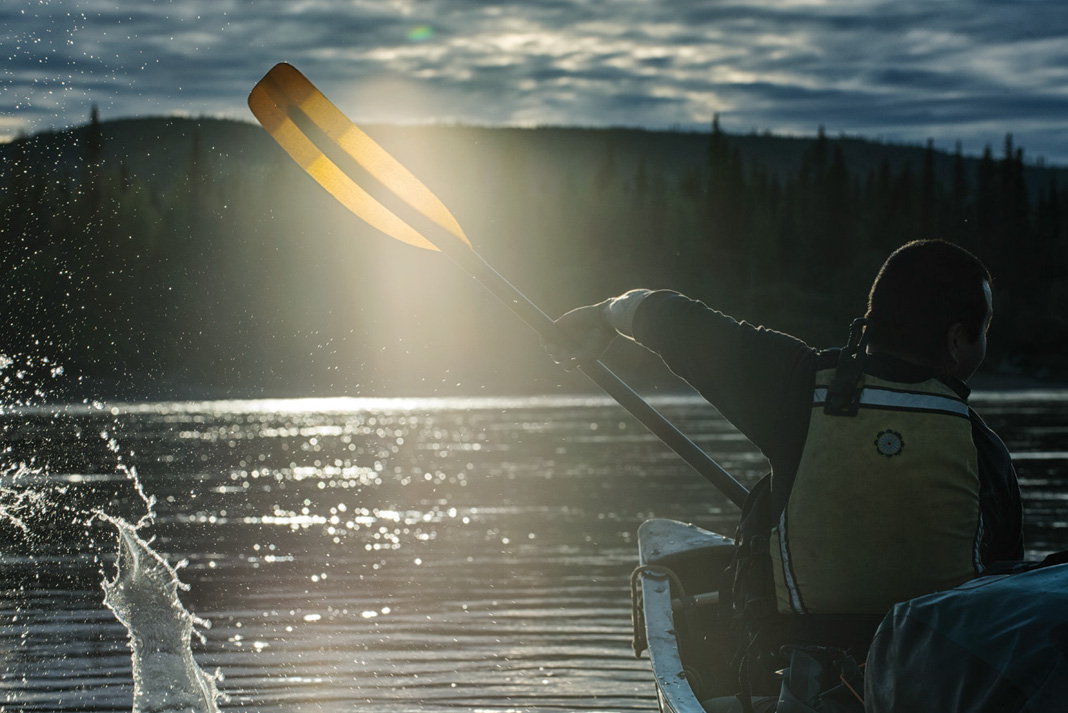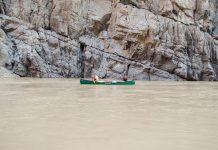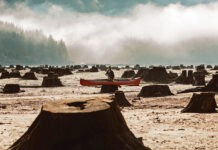Coke competes with Pepsi, Beatles with Stones, Gauls versus Visigoths. Most importantly there are canoeists versus kayakers. Each duality can either peacefully coexist or rage at the other.
Until a paddle on the mighty Thames River in London, England—on the occasion of the British Queen’s Diamond Jubilee Flotilla—I had been prepared to hold my tongue regarding kayakers. But enough is enough. It’s time to speak out about the double-bladed drips.
Let me tell you the story. At the head of this 12-kilometer-long flotilla was the strangely-named Manpowered Squadron, which included 265 paddled and rowed craft. This Squadron was nine columns abreast and 35 rows deep on the river.
The longest vessels were to lead and the smaller vessels, including a herd of 68 kayaks, were to wipe up the rear.
Canada One, a 10-meter North Canoe of which I was helmsperson, had the esteemed anchor position amongst the big boats, beside the New Zealand waka and with four ocean-going outrigger canoes.
We’d been briefed multiple times—in a precise British lilt—to paddle in formation and not to slow or stop. This was particularly important when passing Her Majesty and family waving from the Spirit of Chartwell, the royal barge, which was tied up just below Albert Bridge.
As might be expected, minor delays to take a few passing snapshots of the Royals from the first boats of the Manpowered Squadron turned into a total traffic jam under Albert Bridge by the time the well-behaved crew of Canada One approached. Instead of pushing on and into the oars of large rowing craft ahead, we opted to obediently wait to take our turn to fête the Queen. The three-score and eight unruly kayakers behind us would do the same. We hoped.
Suddenly, we were surrounded by kayakers weaving, dodging and butting their way past us and into the spaces between larger vessels in the squadron. Many of them veered to port to pass as close as possible to the Spirit of Chartwell.

PHOTO: PETER MATHER
By the time we actually got moving again, heading under Albert Bridge and past the Royals, the kayakers were peppered throughout the Manpowered Squadron, leaving the skippers of the bigger vessels cursing over the roar of the crowd.
If any of us had had deck cannons, it would have been open season.
Steadfastly sticking to our position in the melee, we ran into a roving kayaker, smoked him completely broadside. It was a true accident, I can assure you. Though with kayaks on every point of the compass, it’s a miracle there weren’t more casualties.
It was a Guinness World Record, 670 vessels of all shapes, sizes and vintages—yet the only boats out of place were the kayaks.
The ultimate insult came when I arrived home to find my one and only photo of the Royals had a kayak in the foreground.
My problem with kayakers is simple: They need decks and training skirts to keep the water out of their boats. They have a way of busting down rivers and into eddies occupied by unsuspecting canoeists. And they never seem to be able to do anything navigational with less than two blades.
Kayaks are now outselling canoes roughly three to one, even in traditional canoe country. For every well-behaved, patient, considerate and nature-loving canoeist on the water, there will be three of them. Be prepared.
Love to canoe and kayak? Cheeky James Raffan welcomes your letters. James is an author, explorer and the former executive director of the Canadian Canoe Museum.

Subscribe to Paddling Magazine and get 25 years of digital magazine archives including our legacy titles: Rapid, Adventure Kayak and Canoeroots.








